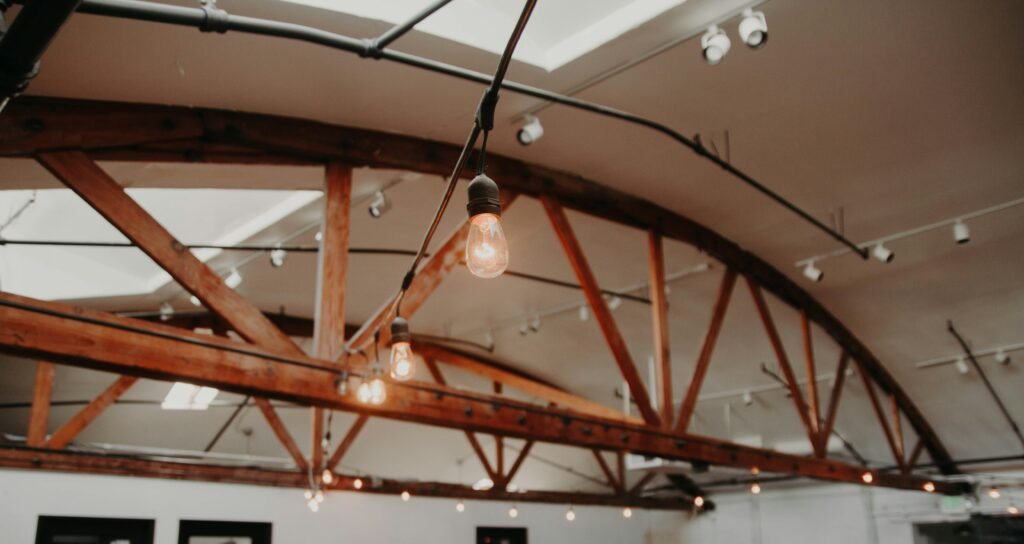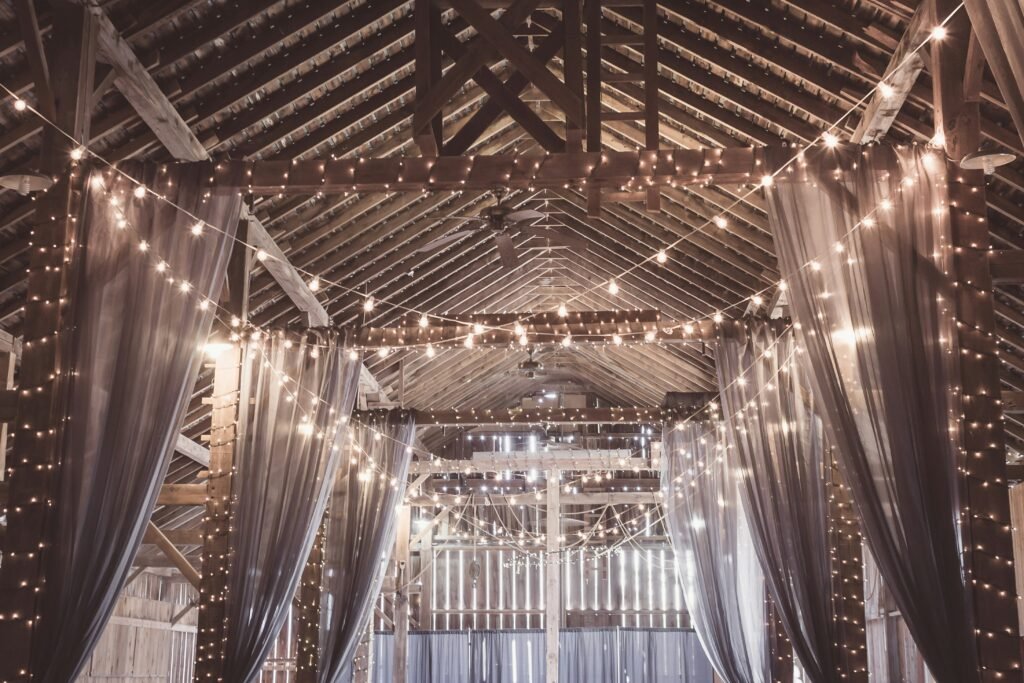Welcome to a guide on maximizing indoor barn lighting efficiency! In this article, you will learn about various techniques and tips to ensure that your barn is well-lit and energy-efficient. From choosing the right type of lighting to implementing smart placement strategies, you will discover how to create a well-lit and productive environment for your livestock or storage needs. Let’s shed some light on indoor barn lighting optimization techniques together!
Maximizing Indoor Barn Lighting Efficiency
Are you looking to improve the lighting in your indoor barn space? Whether you have a hobby farm or a commercial operation, proper lighting is crucial for the well-being of your animals and the success of your business. In this article, we will explore various techniques to maximize indoor barn lighting efficiency. From selecting the right fixtures to optimizing placement, we will help you create a well-lit environment for your livestock. Let’s shed some light on this important aspect of barn management!
Understanding the Importance of Proper Lighting in Barns
Before we delve into specific techniques for optimizing indoor barn lighting, let’s first understand why it is so crucial. Proper lighting in barns serves several key purposes:
-
Animal Welfare: Adequate lighting is essential for the well-being of your livestock. It influences their behavior, growth, and overall health.
-
Worker Safety: Proper lighting is necessary to ensure the safety of employees working in the barn. Good visibility reduces the risk of accidents and injuries.
-
Productivity: Well-lit spaces promote productivity among both animals and workers. Proper lighting can improve feed consumption, milk production, and overall performance.
By recognizing the importance of proper lighting, you can better appreciate why optimizing indoor barn lighting efficiency is a worthwhile endeavor.
Assessing Your Current Lighting Setup
The first step in maximizing indoor barn lighting efficiency is to assess your current setup. Take a close look at the following aspects:
-
Type of Fixtures: What types of lighting fixtures are currently in use in your barn? Are they energy-efficient? Do they provide sufficient brightness?
-
Light Levels: Is the barn adequately lit, or are there areas that are too dim? Measure the light levels in different parts of the barn to identify any inconsistencies.
-
Placement: Are the lighting fixtures strategically placed to ensure even distribution of light? Are there any areas that are shadowed or poorly illuminated?
Taking stock of your current lighting situation will help you identify areas that need improvement and guide your efforts to maximize efficiency.

This image is property of images.unsplash.com.
Selecting the Right Lighting Fixtures
The choice of lighting fixtures plays a crucial role in determining the efficiency of your indoor barn lighting. When selecting fixtures, consider the following factors:
-
Energy Efficiency: Opt for LED fixtures, which are not only energy-efficient but also have a longer lifespan compared to traditional bulbs.
-
Brightness Levels: Choose fixtures that provide the appropriate level of brightness for the specific needs of your barn. Different areas may require different light intensities.
-
Durability: Barn environments can be harsh, with dust, moisture, and temperature fluctuations. Select fixtures that are durable and resistant to these conditions.
By choosing the right lighting fixtures, you can ensure that your barn is well-lit in a cost-effective and sustainable manner.
Calculating Lighting Requirements
To maximize indoor barn lighting efficiency, it is essential to calculate the lighting requirements for your specific space. This involves determining the optimal light levels needed for various areas of the barn, such as:
-
General Housing Area: This includes the main living spaces for your animals. Adequate lighting is essential for their health and well-being.
-
Feeding Areas: Proper lighting in feeding areas ensures that animals can see their food clearly and encourages healthy eating habits.
-
Workspace: If there are areas where workers perform tasks, such as milking or cleaning, adequate lighting is crucial for efficiency and safety.
Calculating lighting requirements allows you to tailor your lighting setup to meet the specific needs of different areas within your barn.

This image is property of images.unsplash.com.
Optimizing Lighting Placement
Once you have selected the right fixtures and calculated your lighting requirements, the next step is to optimize the placement of your lighting fixtures. Consider the following tips:
-
Even Distribution: Ensure that lighting fixtures are evenly distributed throughout the barn to minimize shadows and dark spots.
-
Angle of Light: Position fixtures at the appropriate angle to maximize brightness and minimize glare. Avoid pointing lights directly at reflective surfaces.
-
Adjustable Fixtures: Consider using fixtures that allow for adjustment of the angle and direction of light. This flexibility can help you fine-tune your lighting setup.
By strategically placing your lighting fixtures, you can create a well-lit environment that promotes the health and productivity of your livestock.
Implementing Lighting Controls
To further enhance indoor barn lighting efficiency, consider implementing lighting controls that allow you to adjust brightness levels based on specific needs. Some useful lighting control options include:
-
Dimmers: Installing dimmer switches allows you to adjust the brightness of lights in different areas of the barn as needed.
-
Timers: Setting timers for your lighting fixtures can help you automate the lighting schedule and ensure consistent light levels throughout the day.
-
Occupancy Sensors: Motion-activated lights can help save energy by turning off when no one is present in a particular area of the barn.
By incorporating lighting controls into your setup, you can optimize energy usage and create a more efficient lighting system for your indoor barn.

This image is property of images.unsplash.com.
Monitoring and Maintenance
Once you have optimized your indoor barn lighting setup, it is important to regularly monitor and maintain it to ensure continued efficiency. Here are a few key maintenance tasks to keep in mind:
-
Regular Inspections: Periodically inspect your lighting fixtures for signs of wear and tear, such as flickering bulbs or damaged wiring.
-
Cleaning: Dust and dirt can accumulate on lighting fixtures, reducing their brightness. Regular cleaning can help maintain optimal light levels.
-
Replacement: Replace any faulty bulbs or fixtures promptly to prevent disruptions in your lighting system.
By staying proactive with monitoring and maintenance, you can ensure that your indoor barn lighting remains efficient and effective in the long run.
Conclusion
Proper lighting is a critical aspect of barn management that directly impacts the well-being of your animals and the productivity of your operation. By maximizing indoor barn lighting efficiency through the techniques outlined in this article, you can create a well-lit environment that promotes animal welfare, worker safety, and overall success. Remember to assess your current setup, choose the right fixtures, calculate lighting requirements, optimize placement, implement controls, and stay on top of maintenance. With these strategies in place, you can enjoy a well-lit and efficient indoor barn space for years to come.



